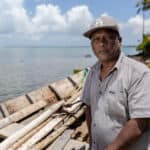Avoiding the Great Divergence: How Community Investment Trusts Could Help Developing Countries Recover from COVID-19 and Achieve the SDGs
Earlier this year, International Monetary Fund Managing Director Kristalina Georgieva warned that the global economy is heading towards a “Great Divergence” – a situation in which economic recovery from COVID-19 gathers momentum in richer countries while most developing countries “languish for years to come.” In this scenario, emerging economies will be stuck in a miasma of slow growth and declining incomes, thereby worsening “the human tragedy of the pandemic, but also the economic suffering of the most vulnerable.”
To avoid this Great Divergence, low and middle-income countries will need a surge of financially, operationally and environmentally sustainable investment in projects that, at a minimum, generate good jobs, expand income-generating opportunities in local communities, create links to local, regional and global value chains, and improve public health.
Many of the key ingredients to support this investment surge are already in place. Thanks to recent technological advances, a wide range of readily-available, cost-effective and affordable development solutions for many of the most pressing development challenges already exist – including off-grid, renewable energy access, smarter agriculture and manufacturing technologies, potable water systems, community health clinics, telemedicine, wi-fi connectivity providers in remote communities, solar-powered irrigation pumps, low-cost housing and sanitation efforts, and off-grid food storage, refrigeration and processing, among others. Meanwhile, new and even better technological solutions are emerging from global research labs at a rapid pace. And in the wake of central bank quantitative easing programs dating back to the 2008 financial crash that increased dramatically during the COVID-19 crisis, the global economy is also awash in liquidity that could, in principle, finance these commercially viable investment programs.
Nevertheless, the global community is still not on track to achieve the SDGs by 2030, especially in developing countries. While there are many reasons for this disappointing progress, one of the critical missing ingredients is the absence of financial and technological conduits to channel these available technologies and financial resources to financially viable for-profit businesses, not-for-profit social enterprises, cooperatives and NGOs. These institutions will play an indispensable role in organizing, operating and deploying these solutions in thousands of communities in dozens of countries, thereby creating formal sector jobs, providing essential services and enhancing income-generating opportunities for hundreds of millions of low-income families who would otherwise find themselves stranded on the wrong side of the Great Divergence.
How can the global development community establish more effective technological and financial conduits? Somewhat surprisingly, we believe that an antidote to the Great Divergence in Latin America, Africa and Asia runs at least initially through Alaska. Therefore, we are calling on the global community — bilateral and multilateral development agencies, NGOs, the business community, the financial sector, foundations, national and local governments in developing countries, and others – to support the creation of Community Investment Trusts (CITs) in developing countries, similar in principle to those established in Alaska exactly 50 years ago, along with several other complementary programs outlined below.
The Community Investment Trust model
After the U.S. Congress made Alaska the 49th state in 1959, the native peoples of Alaska began to agitate for the return of the lands that the Russians (and then the Americans) had seized from them. In response, in 1971 Congress passed and President Nixon signed the Alaskan Native Claims Settlement Act (ANCSA). ANCSA returned some of the lands to the natives. But much more significantly, it established 12 regional and over 200 village corporations, owned by the various Alaskan native groups: Eskimo, Indian and Aleut.
Pursuant to ANCSA, each Alaskan native was issued 100 shares of the 12 private, for-profit regional corporations, as well as shares in private, for-profit native village corporations. To prevent outside takeovers, shares in these corporations could be inherited, but not bought or sold. The native corporations were capitalized by a grant from the federal government and the rights to certain revenues from mineral, oil and gas developments on the native lands. These corporations have invested in a diverse array of economic development projects including oil and gas, fisheries, forestry, tourism, construction, real estate development, and various local services for industry and residents. In addition to empowering the shareholders to have a voice in local economic development decisions, these native corporations have collectively distributed more than $3 billion in dividends to their shareholders. Their combined revenues in 2018 were more than $10.5 billion. They employ more than 15,000 people in the state of Alaska, have a combined statewide payroll of more than $950 million, and provide a wide range of scholarships and other social services to their roughly 138,000 registered shareholders.
We believe that the essential elements of this model could – and should — be introduced in developing countries, with appropriate modifications to accommodate local laws, customs and economic circumstances. For instance, in some countries a corporate structure may be most suitable, as in Alaska. Alternatively, some sort of trust or co-op structure may be preferable in other countries, with the members issued participations rather than shares. In either case, the basis of the trust or corporation can be any meaningful group identity – tribal, religious, geographic, ethnic or otherwise. Irrespective of their precise legal structure, CITs would give communities – and families within the community – both a voice and an ownership or equity stake in the selection and operation of investment projects located in each community. In today’s world, where power flows from the ownership of wealth in the form of income-producing assets, CITs can be a powerful weapon in the battle against anti-democratic, oligarchic concentrations of wealth and power, as well as a conduit for inclusive development.
steps for launching Community Investment Trusts
Launching CITs would entail the following steps:
- National governments would authorize communities to establish Community Investment Trusts.
- Pursuant to the legislation, members of the community would agree to invest a set amount of money per year for five years into the CIT. The actual annual investment from each family would be based on an assessment of their ability to pay, and would vary from country to country and community to community.
- To help capitalize CITs and ensure that they have adequate capital on day one, the authorizing legislation could stipulate that the national government would match each family’s annual investment on a 1:1 or 2:1 basis. In addition, the government could agree to front-load a portion of its matching fund contributions, thereby launching each CIT with enough capital to support a meaningful first round of investment. The government’s matching funds could be financed from natural resource revenues, as in Alaska, or from a portion of the loan proceeds from multilateral development banks and bilateral aid agencies. Foundations could also agree to help capitalize CITs.
- For example, if each family in a community of 1,000 families agreed to invest $100 per year for five years, the CIT would eventually have $500,000 of assets under management, plus any matching funds from the government or other donors. With a conservative 2:1 debt-to-equity ratio and a 1:1 matching grant from the national government or some other source, the CIT could mobilize as much as $3 million for community investments in off-grid electricity, potable water, ICT connectivity, and income-generating investments such as agricultural processing and marketing co-ops.
- As with any business corporation, the board of the CIT would decide if the CIT should reinvest its profits in new projects, pay dividends to the community shareholders, or both.
- CITs could issue two classes of shares. Class A shares would be non-negotiable and restricted to the members of the community, who would elect a majority (or all) of the members of the board of directors. Class B shares would be negotiable and available for purchase by anyone, with full rights to dividend distributions and participation in shareholders’ meetings. In this way the corporation would have access to the capital markets. Otherwise, investments could be limited only to resources generated by retained earnings and borrowing.
To support the operations of CITs, the global development community could also agree to support and finance the following complementary programs:
- A guarantee facility to encourage local financiers to lend or lease to financially viable businesses providing potable water, off-grid electricity, agricultural inputs and other essential services to underserved populations. Evidence from successful loan guarantee programs – e.g., the Nigeria Incentive-Based Risk Sharing System for Agricultural Lending, Shared Interest and the African Guarantee Fund – suggests that these guarantee facilities can be financially sustainable while supporting last-mile deployment to hard-to-reach communities. To enhance the viability of individual projects, non-guaranteed blended finance, grants for capital and operating expenses, and targeted subsidies for the neediest can also be added to the financing mix.
- A global know-how transfer fund to finance the costs of transferring successful business models from entrepreneurs in one country to entrepreneurs hoping to establish similar operations in another country. All too frequently, this knowledge remains bottled up – not because social enterprises are unwilling to share their lessons of experience and transfer their know-how, but because financial support for training and know-how transfer is simply not available.
- A deployment support fund to help entrepreneurs defray the cost of expanding directly into new markets. (This would be distinct from the know-how transfer fund.) Even when an enterprise is willing to expand into new markets, expansion can be prohibitively expensive and time-consuming, especially for social enterprises striving to reach low-income, last-mile consumers. To address this obstacle, a subsidy- or incentive-based pay-for-performance program could finance at least a portion of the incremental costs of scaling the deployment of viable business models. One possible model for this program is the Feed the Future Partnering for Innovation Program funded by USAID. A recent evaluation of this program with useful lessons of experience is available here.
Business-as-usual policies and programs will not help developing countries avoid the Great Divergence. We believe that Community Investment Trusts have the potential to empower these countries – and especially local communities within them – to invest in sustainable projects that will speed their economic recovery from COVID-19, while building a foundation for ongoing growth and development. CITs are not a one-size-fits-all solution – policymakers, of course, will have to modify and adapt the Alaska model to suit local circumstances. Nor, by themselves, are they a silver bullet: To ensure that they work effectively, policymakers will have to buttress them with a range of supportive programs. But CITs are a useful place to begin the quest for bolder and more audacious policies and programs. As the international community explores ways to support an equitable recovery from the pandemic while accelerating progress towards the SDGs, CITs should be a key part of the conversation.
Norman A. Bailey is a professor emeritus at The City University of New York and the University of Haifa, and Alfred Watkins is Founder and Chairman of the Global Solutions Summit.
Photo courtesy of Billie Grace Ward.
- Categories
- Coronavirus, Investing, Social Enterprise





